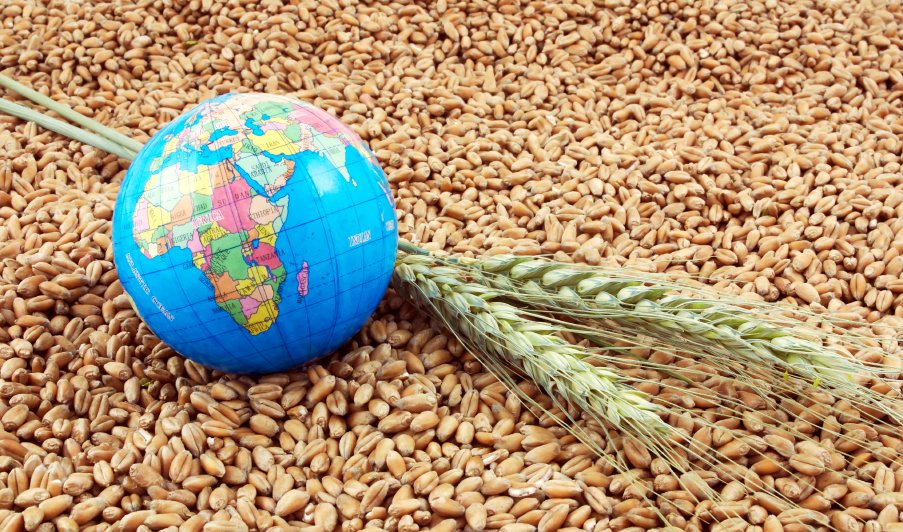Climate is the description of the long-term pattern of weather in a particular area. Climate change refers to changes in global temperature, precipitation, wind patterns, and other measures of climate due to natural or human-caused activities and this change remains for a long period of time.
NASA estimates that climate change may affect the production of maize (corn) and wheat as early as 2030. In the tropics, maize crop yields are projected to decrease by 24% under a high greenhouse gas emission scenario. In comparison, wheat yields may increase by about 17%. A shift in rainfall patterns and an increase in carbon dioxide, methane, and nitrous oxide concentrations due to climate change are among the effects predicted for the future. On the other hand, Harvard University’s new study informed the world that climate change is responsible for the uncertainty about future resources.
CHumans consume 20% of their calories from wheat, which provides 20% of all calories consumed. However, greenhouse gases threaten wheat’s nutritional value. Climate change could cause major droughts in 60 percent of wheat-growing areas worldwide, and prolonged, extreme droughts could affect over half of the world’s wheat production by the end of the century. Drought affects 15% of wheat production, which will likely continue to increase food prices. Development countries and low-income regions of Africa and eastern and southeast Asia, which are home to most of the world’s malnourished and wheat-consuming populations, would be the worst affected. These two studies enabled us to understand how climate change affects agriculture.
On the one hand, climate change decreases maize areas and converts them into wheat areas; however, on the other hand, climate change adversely impacts wheat fields.
Furthermore, let us examine how climate change impacts Pakistan’s wheat production. A total of 26.4 million tons of wheat will be produced in the market year 2022-2023, which is 4% less than the last year’s 28.6 million tones despite the government of Punjab’s “Grow more wheat” campaign on a large scale with the help of all agricultural universities in the province. In the province. Pakistan is expected to import 2.5 million tons of wheat in the marketing year 2022-23 due to the failure of this campaign to take the yield of 30 million tons. Another reason other than the unavailability of fertilizer is the rise in temperature in March-April, which causes heat stress and forced maturity of wheat grain, causing it to shrivel.
Throughout March, temperatures were consistently 3 to 8 degrees Celsius above average. A 62% decrease in rainfall was recorded in Pakistan for March. The country has risen to 2.2 °C in temperature since the pre-industrial era. Due to this, wheat yield in late sowing has decreased by 20-30%. The ideal temperature for wheat is between 15 to 25 °C. High temperatures affect wheat pollination because the male part of the plant is sensitive to high temperatures. The application of Boron helps wheat fertilize more efficiently. Suppose a similar situation occurs in the future. In that case, we can use the following agronomic practices to deal with heat stress:
- Select a longer growing season and sow the crop at the right time to avoid heat stress during critical plant development. As early-sowing wheat crops are more resistant to heat stress than late-sowing wheat, it is important to avoid late sowing in wheat.
- Use the best method for sowing, like Raise Bed.
- Cultivate heat resistance varieties like Gold-16, Punjab-11, and Fakher e Bhakkar, which also have good yield potential.
- Increase the efficiency of irrigation systems and water transportation. In other words, to adopt Water conservation techniques (Drought-Tolerant Crops, Collect and Store Rainwater, Optimize Watering Times, Laser Field Leveling, Tailwater Reuse, Gated Pipe Irrigation).
- Residue retention alone or in combination with nitrogen and phosphorus fertilizers.
- Alter plant population density to reduce crop demands for Water or nutrients.
- Increase soil cover to conserve moisture and reduce soil temperatures (Mulch or Black Plastic).
- Improve the use of seasonal and short-term weather forecasts to get updated with the weather condition.

One thought on “Climate Change and it’s impact on wheat”
Coping with heat stress is the need of the hour. Must be focused